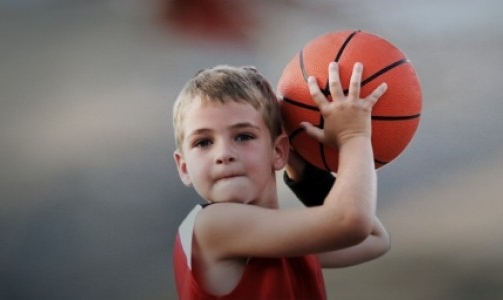Often, our educational interventions are putting a roof on a weak foundation. The acquisition of reading, writing, math and other academic skills is dependent upon a normally-developed nervous system. Communication between the brain’s two hemispheres and integration of sensory input from the eyes, ears and motor systems must be intact for adequate response to intervention (RTI). However, efficient processing doesn’t occur in an immature nervous system. By providing appropriate auditory, visual and vestibular stimulation, iLs helps the nervous system develop. This ability of the brain to change in response to stimulation is known as “neuroplasticity.” iLs builds a solid foundation for learning and communicating through repeated, gentle stimulation of the following systems:
 Vestibular
Vestibular
The vestibule in the inner ear plays a key role in our balance as well as our ability to modulate sensory input. In terms of learning and behavior, vestibular and prioprioceptive (see below) input tends to help children and adults become more regulated. Once regulated, they can more easily attend to higher brain functions such as reading, writing and expressive language. The balance activities and bone conduction stimulation of the iLs headphones provide different types of vestibular stimulation in each session.
Targeted Skills: coordination, balance, focus, self-regulation
Auditory
iLs processes classical music to emphasize different frequencies per therapeutic objectives. The goal is to train the ear and the brain to analyze and process sound more quickly and accurately. For example, the iLs Sensory Motor Program for those with autism and/or sensory processing challenges emphasizes a range of low frequencies which influence balance, rhythm, coordination and body awareness. The iLs Reading/Auditory Processing Program focuses on the mid-range frequencies of the English language to train one’s sense of pitch discrimination. As a result of repeated listening, the vestibulo-cochlear system improves its ability to transfer auditory information to the brain. Additionally, the bone conduction delivery in iLs headphones provides a unique stimulation to the vestibular system.
Targeted Skills: pitch discrimination, auditory processing, reading, mood, concentration and balance.
Visual Motor
iLs Playbook activities include visual tracking and visual perception activities in every session. The simultaneous exercising of these skills with balance and auditory training seems to have an exponential effect on reading and other related skills.
Targeted Skills: reading, hand/eye coordination, balance, sports
Proprioceptive
By improving the sense of one’s own body – where it is, how to control it, how to move it – to the point where we don’t need to think about it, we are freeing up the brain to focus on higher order activities. Children and adults who improve their proprioceptive abilities are able to approach learning and communication tasks in a more relaxed and regulated manner. iLs’ movement program focuses on building proprioceptive abilities with specific exercises in each session.
Targeted Skills: attention, calm, athletics, coordination, daily movement, confidence
 Parasympathetic
Parasympathetic
The autonomic nervous system (ANS) controls many organs and muscles that work in an involuntary, reflexive manner. The ANS is important in 2 situations: emergencies that require us to “fight” or to take “flight” and non-emergencies that allow us to “rest and digest.” The part of the ANS which governs the latter is the Parasympathetic Nervous System (PNS). iLs’ auditory program stimulates the PNS through the vagus nerve (afferent fibers in the outer ear). Many children and adults beginning iLs programs are in a state of hyper-arousal, not far from “fight or flight.” The gentle stimulation of the PNS brings about a balance of the ANS which is reflected by increased calm and self-regulation.
Targeted Skills: behavior; ability to focus; the calm state which allows one to better focus on higher cognitive functions
Cerebellum
The cerebellum is 10% of the weight of the brain but it has 50% of the brain’s neurons. In computer terms, it’s our processor, receiving input from sensory systems and various parts of the brain, and integrating these inputs to fine tune motor activity. Most neuroscientists agree it is involved in motor functions, cognitive functions such as attention and emotional functions such as regulating fear and pleasure responses. The iLs Playbook’s repetitive activities are believed to stimulate cerebellar function. Inputs from the visual, vestibular and auditory systems, session after session, train the cerebellum to become efficient at processing multi-sensory information.
Targeted Skills: motor control; “automaticity” (motor activities becoming automatic); processing
Hemispheric Integration
Receptors in the body deliver sensory information to the brain (and vice versa). If these receptors and the pathways leading up to the brain are not working because they were damaged or did not develop properly, the activity level of the brain decreases and different areas of the brain may not communicate with each other properly. In addition, the right and left sides of the brain must be balanced in order to allow for proper communication to take place between the different areas involved in higher brain function. Cross-lateral activities in the Playbook require the almost constant transfer of information from one hemisphere to the other, “exercising” the bridge that transfers information, the corpus callosum.
Targeted Skills: processing speed, cognitive functions, emotional health

 Vestibular
Vestibular Parasympathetic
Parasympathetic
 © 2025 Unyte Health US Inc.
© 2025 Unyte Health US Inc.